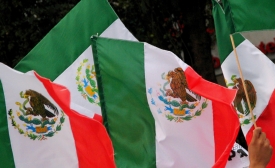middle power diplomacy

What can we expect from The Global Public Diplomacy Network (GPDNet) following its fifth General Assembly?
The Park Geun-hye administration started with an ambitious middle-power foreign policy agenda. But as President Park’s time in office seems set to come to an end, South Korea’s middle power prestige may fall victim to South Korea’s domestic politics. Park had several policies seeking to utilize South Korea’s middle power status. The "Eurasia Initiative" aimed to establish a logistics and energy network through North Korea, Russia, Central Asia and on to Europe.
In India, Japan may have found an appropriate strategic partner in Asia so as to work towards stability in the region. The two key elements of the new Indo-Japan strategic partnership are civil nuclear cooperation and that in defence [sic].

This new article from Hernán F. Gómez Bruera, professor and postdoctoral fellow at the Public Policy Division of the Centro de Investigación y Docencia Económica in Mexico City, offers an assessment of Mexico's missed steps and missed opportunities to become an influential middle power nation.
MIKTA – an association consisting of Mexico, Indonesia, Korea, Turkey, and Australia – is still a relatively new platform, having been formed in 2013, but it may now be confronted with its first real opportunity to have an impact on the global stage.







